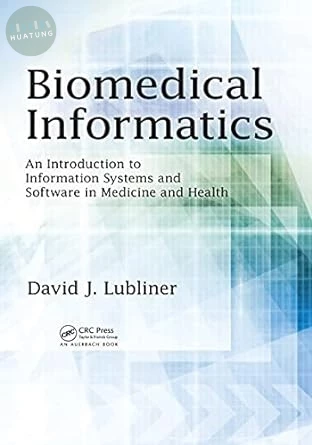
| 定價: | ||||
| 售價: | 399元 | |||
| 庫存: | 已售完 | |||
| LINE US! | ||||
| 此書為本公司代理,目前已售完,有需要可以向line客服詢問進口動向 | ||||
| 付款方式: | 超商取貨付款 |

|
|
| 信用卡 |

|
||
| 線上轉帳 |

|
||
| 物流方式: | 超商取貨 | ||
| 宅配 | |||
| 門市自取 |
為您推薦

其他會員也一起購買
【原文書】 書名:Discrete-Time Signal Processing 3/e IE 作者:Alan V. Oppenheim ISBN:9780132067096 出版社:PEARSON 內容簡介 For senior/graduate-level courses in Discrete-Time Signal Processing.THE definitive, authoritative text on DSP — ideal for those with an introductory-level knowledge of signals and systems. Written by prominent DSP pioneers, it provides thorough treatment of the fundamental theorems and properties of discrete-time linear systems, filtering, sampling, and discrete-time Fourier Analysis. By focusing on the general and universal concepts in discrete-time signal processing, it remains vital and relevant to the new challenges arising in the field.Access to the password-protected companion Website and myeBook is included with each new copy of Discrete-Time Signal Processing, Third Edition.Ch 1:IntroductionCh 2:Discrete Time-Signals and SystemsCh 3:The z-TransformCh 4:Sampling of Continuous-Time SignalsCh 5:Transform Analysis of Linear Time-Invariant SystemsCh 6:Structures for Discrete-Time SystemsCh 7:Filter Design TechniquesCh 8:The Discrete Fourier TransformCh 9:Computation of the Discrete Fourier TransformCh 10:Fourier Analysis of Signals Using the Discrete Fourier TransformCh 11:Parametric Signal ModelingCh 12:Discrete Hilbert TransformsCh 13:Cepstrum Analysis and Homomorphic DeconvolutionAppendix A. Random SignalsAppendix B. Continuous-Time FiltersAppendix C. Answers to Selected Basic Problems 目錄 Ch 1:Introduction Ch 2:Discrete Time-Signals and Systems Ch 3:The z-Transform Ch 4:Sampling of Continuous-Time Signals Ch 5:Transform Analysis of Linear Time-Invariant Systems Ch 6:Structures for Discrete-Time Systems Ch 7:Filter Design Techniques Ch 8:The Discrete Fourier Transform Ch 9:Computation of the Discrete Fourier Transform Ch 10:Fourier Analysis of Signals Using the Discrete Fourier Transform Ch 11:Parametric Signal Modeling Ch 12:Discrete Hilbert Transforms Ch 13:Cepstrum Analysis and Homomorphic Deconvolution Appendix A. Random Signals Appendix B. Continuous-Time Filters Appendix C. Answers to Selected Basic Problems

其他會員也一起購買
原文書資訊 書名:Digital Image Processing 4/E Global Edition 2018<Pearson>4/E 作者: Woods/Gonzalez ISBN: 9781292223049 出版社: Pearson 出版年: 2017年 中文書資訊 書名: 數位影像處理(Gonzalez & Woods:Digital Image Processing ) 作者: Gonzalez/ 繆紹綱 ISBN: 9789863782155 出版社: 高立 出版年: 2019年

類似書籍推薦給您
DESCRIPTION Introduction to BiomedicalImaging A state-of-the-art exploration of the foundations and latest developments in biomedical imaging technology In the newly revised second edition of Introduction to Biomedical Imaging, distinguished researcher Dr. Andrew Webb delivers a comprehensive description of the fundamentals and applications of the most important current medical imaging techniques: X-ray and computed tomography, nuclear medicine, ultrasound, magnetic resonance imaging, and various optical-based methods. Each chapter explains the physical principles, instrument design, data acquisition, image reconstruction, and clinical applications of its respective modality. This latest edition incorporates descriptions of recent developments in photon counting CT, total body PET, superresolution-based ultrasound, phased-array MRI technology, optical coherence tomography, and iterative and model-based image reconstruction techniques. The final chapter discusses the increasing role of artificial intelligence/deep learning in biomedical imaging. The text also includes a thorough introduction to general image characteristics, including discussions of signal-to-noise and contrast-to-noise. Perfect for graduate and senior undergraduate students of biomedical engineering, Introduction to Biomedical Imaging, 2nd Edition will also earn a place in the libraries of medical imaging professionals with an interest in medical imaging techniques.

類似書籍推薦給您

類似書籍推薦給您
【簡介】 This concise textbook introduces an innovative computational approach to quantum mechanics. Over the course of this engaging and informal book, students are encouraged to take an active role in learning key concepts by working through practical exercises. The book equips readers with some basic methodology and a toolbox of scientific computing methods, so they can use code to simulate and directly visualize how quantum particles behave. The important foundational elements of the wave function and the Schrödinger equation are first introduced, then the text gradually builds up to advanced topics including relativistic, open, and non-Hermitian quantum physics. This book assumes familiarity with basic mathematics and numerical methods, and can be used to support a two-semester advanced undergraduate course. Source code and solutions for every book exercise involving numerical implementation are provided in Python and MATLAB(R), along with supplementary data. Additional problems are provided online for instructor use with locked solutions.

類似書籍推薦給您
【簡介】 Why can't you take Newtonian gravity, add special relativity, and build a relativistic theory of gravity that matches the predictions of our accepted theory, Einstein's general relativity? Ideal for a

類似書籍推薦給您
【簡介】 Experts Plebański and Krasiński provide a thorough introduction to the tools of general relativity and relativistic cosmology. Assuming familiarity with advanced calculus, classical mechanics, electrodynamics and special relativity, the text begins with a short course on differential geometry, taking a unique top-down approach. Starting with general manifolds on which only tensors are defined, the covariant derivative and affine connection are introduced before moving on to geodesics and curvature. Only then is the metric tensor and the (pseudo)-Riemannian geometry introduced, specialising the general results to this case. The main text describes relativity as a physical theory, with applications to astrophysics and cosmology. It takes the reader beyond traditional courses on relativity through in-depth descriptions of inhomogeneous cosmological models and the Kerr metric. Emphasis is given to complete and clear derivations of the results, enabling readers to access research articles published in relativity journals.